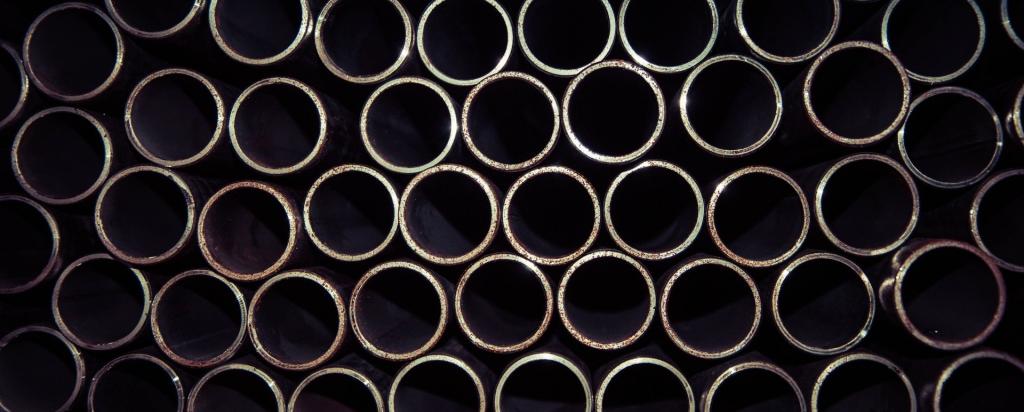
Pictured: The surface condition of two samples of the magnesium-lithium alloy following immersion for 20 hours in salt water, one after being heat-treated and water quenched, and the other without processing. In previous magnesium-lithium alloys, irreversible corrosion would have set in after such time, but clearly visible in this optical profilometer image, the surface of the processed alloy remains in near pristine condition.
Researchers led by a team at UNSW Australia have used the Australian Synchrotron to turn the discovery of an ultra-low density and corrosion-resistant magnesium alloy into the first step toward mass-producing ‘stainless magnesium’, a new high-strength, lightweight metal, paving the way for cars, trucks and aeroplanes that can travel further distances on less petrol.
The magnesium-lithium alloy weighs half as much as aluminium and is 30 per cent lighter than magnesium, making it an attractive candidate to replace these commonly used metals to improve fuel efficiency and greatly reduce greenhouse gas emissions from transport vehicles.
The findings, published in the current edition of Nature Materials with researchers from Monash University in Melbourne, describe how the alloy forms a protective layer of carbonate-rich film upon atmospheric exposure, making it immune to corrosion when tested in laboratory settings.
Professor Michael Ferry, from UNSW’s School of Materials Science and Engineering, says this formation of a protective surface layer can be considered similar to the way a layer of chromium oxide enables the protection of stainless steel.
‘Many similar alloys have been created as researchers seek to combine the incredible lightness of lithium with the strength and durability of magnesium to develop a new metal that will boost the fuel efficiency and distance capacity of aeroplanes, cars and spacecraft.
‘This is the first magnesium-lithium alloy to stop corrosion from irreversibly eating into the alloy, as the balance of elements interacts with ambient air to form a surface layer which, even if scraped off repeatedly, rapidly reforms to create reliable and durable protection.’
Professor Ferry, senior author of the paper led by Dr Wanqiang Xu also from UNSW, says this excellent corrosion resistance was observed by chance, when his team noticed a heat-treated sample from Chinese aluminium-production giant, CHALCO, sitting, inert, in a beaker of water.
‘To see no corroded surfaces was perplexing and, by partnering with scientists on the Powder Diffraction (PD) beamline at the Australian Synchrotron, we found the alloy contains a unique nanostructure that enables the formation of a protective surface film.
‘Now we’ve turned our attention to investigating the molecular composition of the underlying alloy and the carbonate-rich surface film, to understand how the corrosion process is impeded in this “stainless magnesium”.’
The transport sector accounts for 90 megatonnes (90 billion kilograms) of greenhouse gas emissions in Australia each year, or 16 per cent of Australia’s total; road vehicles account for 77 megatonnes and aviation eight tonnes.
Professor Nick Birbilis, School of Materials Science and Engineering at Monash University, says viewing unprecedented structural detail of the alloy through the Australian Synchrotron will enable the team, involving researchers from Monash University, CHALCO, and Nanjing University of Technology in China, to work toward commercialising the new metal.
‘Through our close collaborator, Dr Yang Xiao, we have strong ties to the Zhengzhou Light Metals Research Institute of CHALCO in China.
‘We’re aiming to take the knowledge gleaned at the Australian Synchrotron to incorporate new techniques into the mass-production of this unique alloy in sheets of varying thickness, in a standard processing plant.
‘These panels will make many vehicles and consumer products much lighter and, eventually, just as durable as today’s corrosion-resistant stainless steel, another example of how advanced manufacturing is unlocking the potential of materials that have been under investigation, in too narrow a manner, for centuries.’
Media coverage:
Discovery of ‘stainless magnesium’ on ABC radio's ‘AM’, Thursday 26 November 2015